Bio-degradable cards
Every card imaginable!
|
Bio-degradable cards Every card imaginable! Living with Visual Impairment: What It Means and How to Get Help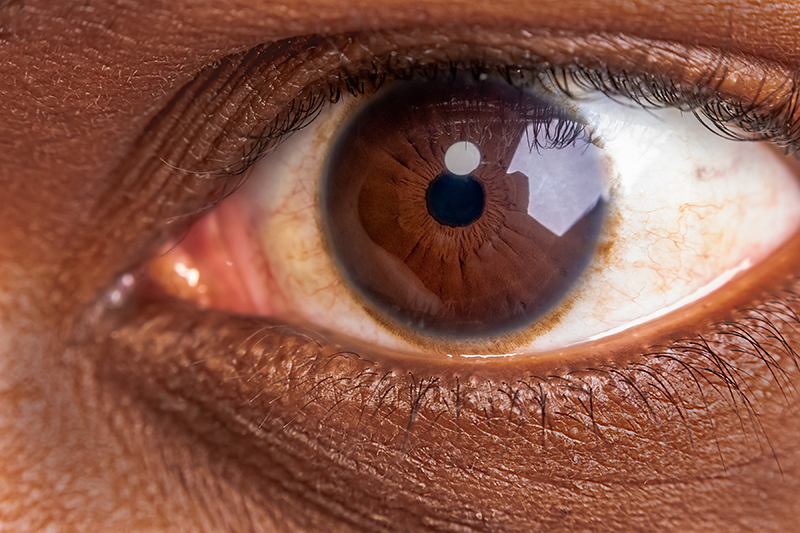
DisclaimerThis guide is for informational purposes only and is not a substitute for professional medical advice. Always consult a qualified healthcare professional for any personal concerns. Dated: December 2025. Table of ContentsUnderstanding Visual ImpairmentWhat does visual impairment actually mean?Visual impairment refers to a range of sight problems that cannot be fully corrected with glasses, contact lenses, or surgery. It exists on a spectrum, from mild issues – such as blurred vision or a reduced field of view – to profound sight loss, including complete blindness. In the UK, many people with severe visual impairment can still detect light, shadows, large shapes, or movement. It’s a common misconception that blindness always means total darkness; for most people, some level of visual information remains. It’s completely understandable to feel worried or overwhelmed when you or a loved one receives this news. Everyday activities like reading, recognising faces, navigating familiar places, or even watching television can suddenly feel uncertain. The good news is that with the right support and adjustments, most people adapt remarkably well and continue to lead full, independent lives. How common is it, and who does it affect?Around 2 million people in the UK live with sight loss significant enough to impact their daily lives, and this number is expected to rise as the population ages. Visual impairment can affect anyone at any age – from babies and children to working adults and older people. The way it impacts someone depends largely on when it begins and its severity. In children, early sight problems can influence play, social interactions, and learning at school. However, with timely support from specialists, many children develop strong skills and confidence, often achieving the same milestones as their sighted peers. Parents often feel anxious at first, but specialist teachers and therapies can make a huge difference to a child’s development and future independence. In adults, gradual sight loss might first show up as difficulty reading small print, driving at night, or following hobbies like sewing or sport. Sudden changes can be particularly distressing, but many people find practical ways to adapt, such as using technology or learning new techniques, and continue working, travelling, and enjoying family life. Official terms used in the UKIn the UK, the terms “sight impaired” (previously called partially sighted) and “severely sight impaired” (previously called blind) are used for official registration with your local authority. Registration is entirely voluntary, but it is a practical and important step. Registering as sight impaired or severely sight impaired unlocks access to a range of benefits, concessions, and specialist services, such as extra financial support, reduced-cost public transport, parking concessions, and priority help from social services. Many people worry that registration sounds final or labelling, but it is simply a way to ensure you receive the practical help you’re entitled to. The process starts with an eye specialist (an ophthalmologist) completing a Certificate of Vision Impairment (CVI) form, which is then sent to your local social services team. They will contact you to discuss what support might be helpful, with no obligation to accept anything you don’t need. Knowing these basics can help you feel more prepared and in control. Whether you’re an adult noticing changes in your own vision or a parent concerned about your child, understanding what visual impairment means is the first step towards getting the right help and moving forward confidently. 
Common Causes and TypesVisual impairment can arise from a variety of eye conditions, injuries, illnesses, or even brain-related issues, and knowing the cause can help set realistic expectations and guide the best ways forward. It’s completely understandable to feel uncertain or worried when trying to make sense of a diagnosis—many people do at first. The good news is that many common causes are now better understood, and early detection through regular eye tests can prevent or slow progression in a significant number of cases. In the UK, organisations like the RNIB and NHS emphasise that while some sight loss is irreversible, treatments and support can make a real difference to daily life. The most common causes in adultsIn the UK, the leading causes of significant sight loss tend to affect older adults, often linked to ageing or long-term health conditions. Here are some of the most frequent ones:
Other causes in adults include strokes (which can lead to sudden field loss, like hemianopia, where half the visual field is affected) or injuries, but these are less frequent. Causes more common in childrenSight problems in children often stem from different issues, many present from birth or early life, and cerebral (or cortical) visual impairment (CVI) is now recognised as one of the leading causes in the UK.
Key ways visual impairments are categorisedVisual impairments aren’t one-size-fits-all—they vary in onset, progression, and impact.

Diagnosis and AssessmentWhen to seek help and where to startIf you or someone close to you notices changes in vision—such as blurred sight, difficulty reading, trouble recognising faces, or bumping into things more often—it’s worth getting it checked promptly. In the UK, the usual first step is to visit your local optician (optometrist) for a routine eye test, or speak to your GP if symptoms feel urgent. Opticians can spot many issues during a standard check and refer you to a hospital eye clinic if needed. Eye tests are free on the NHS for many people, including children under 16 (or under 19 if in full-time education), those over 60, people with diabetes or glaucoma, and those receiving certain benefits. Even if you pay privately, an eye test is straightforward and painless, usually taking about 20-30 minutes. Booking one early can catch problems before they worsen, and many conditions respond better to treatment when identified soon. What happens during an adult eye assessmentAn ophthalmologist (eye doctor) at a hospital clinic will carry out a more detailed examination if your optician refers you. They use several tests to build a clear picture of your vision.
These tests help identify the cause and severity of any sight loss. You might need more than one appointment, and it’s helpful to bring details of your symptoms, family history, and any medications. Assessments for childrenSpotting vision issues in young children can be harder because they may not realise something is wrong or know how to explain it. Parents or teachers might notice signs like squinting, sitting very close to the TV, or delayed development in reading or play. Specialist paediatric eye clinics use child-friendly methods, such as picture cards, matching games, or toys to assess how well a child sees and uses their vision. For very young children or those with additional needs, tests might focus on reactions to lights, colours, or moving objects. If cerebral visual impairment (CVI) is suspected, the assessment often involves a multidisciplinary team, including neurologists, to look at how the brain processes visual information. Early and thorough checks are vital because they guide the right support for learning and development. Low vision assessments and registrationOnce a diagnosis is clear, many people benefit from a low vision assessment, usually arranged through the hospital eye clinic. A low vision specialist evaluates how you use your remaining sight in everyday tasks and recommends practical aids, such as magnifiers, brighter lighting, larger-print materials, or electronic devices. They can also advise on adjustments at home or work to make things easier. If your vision meets specific criteria—generally a visual acuity worse than 6/60 in the better eye, or a significantly restricted visual field—the ophthalmologist may offer to complete a Certificate of Vision Impairment (CVI). This official form is sent to your local social services team, who will contact you to discuss support options. Registration as sight impaired or severely sight impaired is completely voluntary. It simply records your level of sight loss and opens access to benefits like Disability Living Allowance, Personal Independence Payment, tax concessions, free NHS sight tests, and local authority services. Many people find the process straightforward and appreciate the extra help it brings. 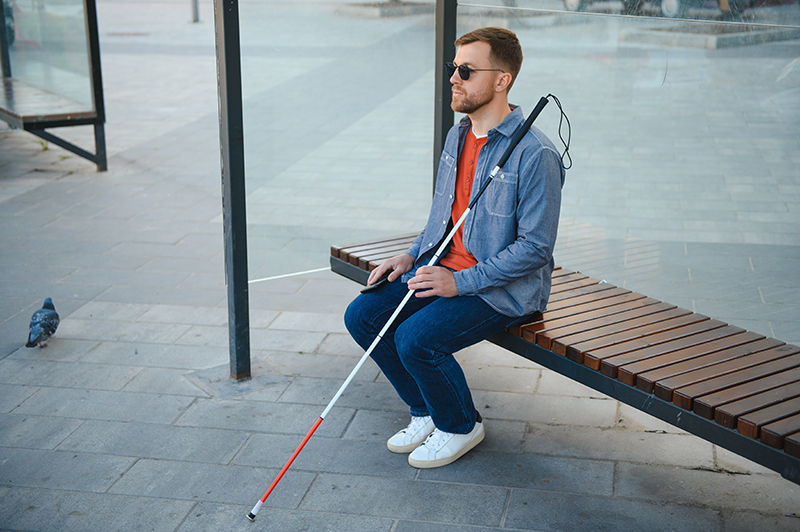
Managing Daily LifeMaking your home safer and easier to useLiving with visual impairment often starts with small, practical adjustments at home that can make a big difference to safety and independence. Many people find that reorganising their space reduces accidents and builds confidence over time.
These changes don’t need to happen all at once. Start with the rooms you use most, and local authority occupational therapists can visit to suggest personalised ideas, often free of charge. Getting out and about: mobility and travelMoving around independently is a key part of daily life, and specialist training helps many people travel confidently.
Work, education, and staying activeVisual impairment doesn’t have to limit career or learning opportunities—reasonable adjustments make most roles and studies accessible.
Technology that supports everyday tasksModern devices and apps have transformed how people with sight loss manage routines.
Looking after emotional wellbeingAdjusting to sight loss can bring ups and downs, from frustration on difficult days to pride in new skills mastered. Many people find it helpful to speak with counsellors who understand sight loss—RNIB and local sight loss charities often provide this service. Peer support groups, whether in person or online, offer practical tips and a chance to share experiences with others who truly understand. Families benefit from open conversations and trying new shared activities, such as listening to podcasts or playing audio games together. 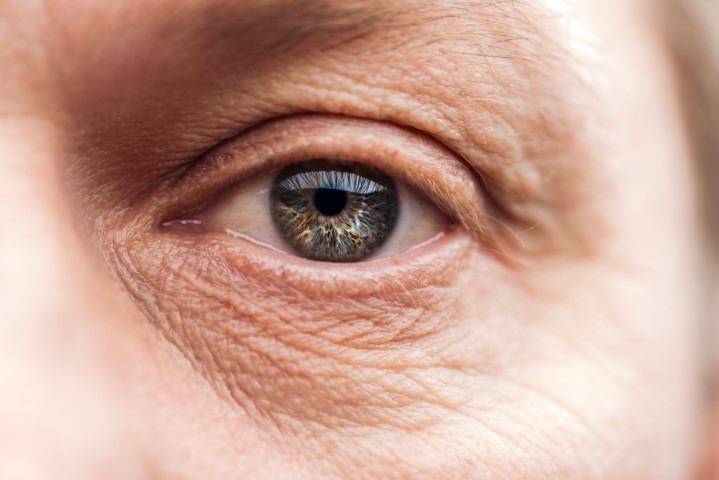
Treatment and Management OptionsMedical treatments for specific conditionsNot all visual impairments can be fully reversed, but many common conditions have effective treatments that can stabilise vision, slow progression, or even restore significant sight. The right approach depends on the underlying cause, and your ophthalmologist will guide you through the options best suited to your situation.
For other conditions like retinitis pigmentosa or optic nerve damage, medical options may be limited, but ongoing monitoring ensures any new developments are considered promptly. Maximising remaining vision with low vision supportWhen sight loss is irreversible, the focus shifts to making the most of what vision remains through practical tools and training.
The role of lifestyle and preventionLooking after your overall health plays a big part in protecting eyesight and managing existing conditions.
Emerging treatments and researchResearch continues to bring new possibilities, particularly for inherited conditions.
Always talk through any new treatment with your eye team—they can explain success rates, side effects, and waiting times on the NHS or privately. Combining medical care, practical adaptations, and healthy habits gives the best chance of maintaining good vision and independence for as long as possible. 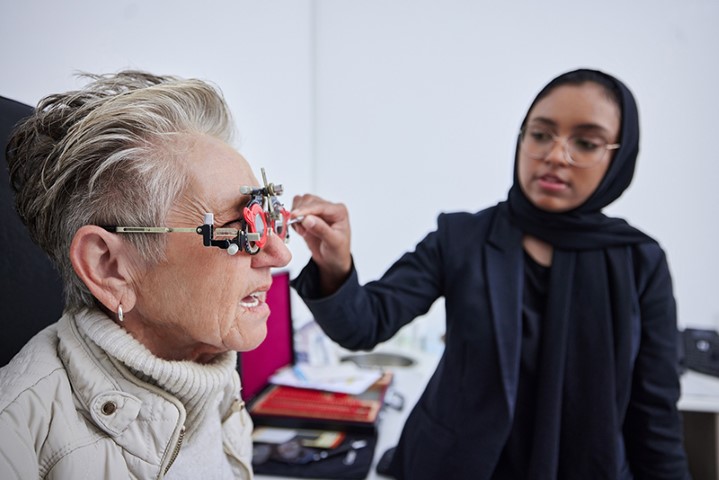
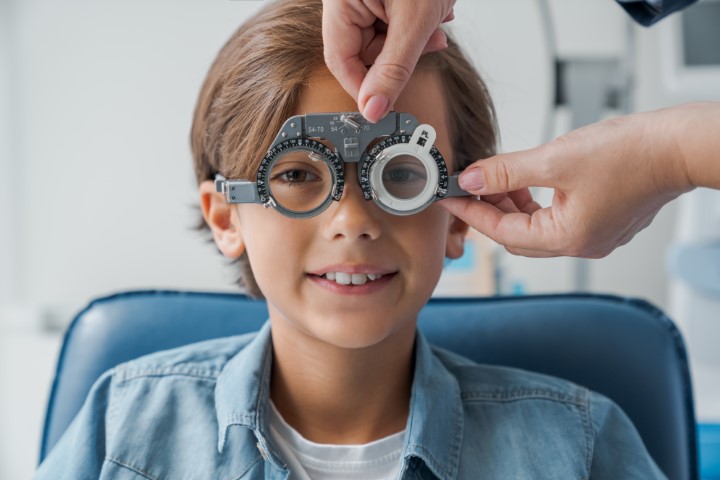
Help and Further ResourcesNational organisations offering supportThe UK has several dedicated charities and organisations that provide information, advice, practical help, and emotional support for people living with visual impairment. Reaching out to them can connect you to local services, peer groups, and specialist guidance tailored to your needs.
Support for children and familiesFamilies with visually impaired children often need advice on education, development, and overlapping needs.
For those with visual impairment, our medical ID cards and Awarness Cards for the visually impaired provide an easy way to share important information quickly. You can see the full range on our website. Local council and government supportYour local authority’s sensory or vision impairment team is a great starting point for personalised help. They can arrange home assessments, loan equipment (such as talking watches, large-button phones, or liquid level indicators), and provide rehabilitation training. Contact details are usually on your council’s website under adult social care or sensory services—registration as sight impaired or severely sight impaired often speeds up access. Financial help is available through government benefits to cover extra costs associated with visual impairment.
Getting started with helpStart by contacting your GP, optician, or eye clinic—they can refer you to local services or complete a Certificate of Vision Impairment if appropriate. From there, organisations like RNIB or your council team can map out the best next steps for you or your family. Support is available at every stage, whether you’re newly diagnosed, adapting to changes, or seeking ways to stay connected and active. 
Frequently Asked QuestionsWhat exactly does visual impairment mean?Visual impairment describes a level of sight loss that cannot be fully corrected with glasses, contact lenses, or refractive surgery. It covers a wide spectrum—from mild blurring or reduced field of view to profound loss where only light perception remains, or in some cases none at all. The impact varies greatly from person to person, depending on the type and severity of the condition. In the UK, official terms like “sight impaired” and “severely sight impaired” are used mainly for registration purposes to access support, but they don’t capture the full individual experience. What are the early signs to watch for?Many people first notice subtle changes that gradually affect daily tasks. Common early signs in adults include struggling to read small print (even with glasses), difficulty recognising faces at a distance, frequent headaches from eye strain, or bumping into objects on one side. In low light, things like driving at night or moving around dimly lit rooms can become harder. For children, signs might be less obvious—they may hold books very close, squint a lot, rub their eyes frequently, avoid detailed tasks like drawing, or seem slower to follow moving objects. If any of these persist for more than a couple of weeks, book an eye test with an optician straight away—early checks can make a big difference. Can visual impairment be prevented?Not all types can be prevented, especially those linked to genetics or ageing, but many risks can be reduced through everyday habits. Managing conditions like diabetes and high blood pressure through diet, exercise, and medication protects the eyes from complications such as diabetic retinopathy. Quitting smoking significantly lowers the chances of age-related macular degeneration and cataracts. Wearing UV-protective sunglasses outdoors and safety goggles for DIY or sports prevents damage from sunlight or injury. Regular NHS sight tests (free for many groups) catch problems early when they’re often easier to treat or slow down. How does registration as sight impaired work?Registration is a simple, voluntary process that helps you access practical support and concessions. It starts when your ophthalmologist believes your vision meets the official criteria—typically a visual acuity worse than 6/60 in your better eye or a significantly restricted visual field. They complete a Certificate of Vision Impairment (CVI), which is sent to your local authority’s social services team. The team then contacts you to discuss what help might be useful, such as equipment loans, mobility training, or financial benefits. Registration doesn’t change how you see the world day-to-day, but it opens doors to things like tax allowances, discounted travel, and priority services. What aids help with reading?A range of tools and services make reading accessible again, and a low vision clinic can help you find the best fit.
Trying different options with specialist advice often reveals combinations that work well for different tasks. Is driving possible with visual impairment?UK law is clear: you must be able to read a number plate from 20 metres (with glasses or contacts if needed) and have an adequate field of vision to drive safely. If your sight falls below this standard, you’re legally required to stop driving and inform the DVLA. Many people switch successfully to alternatives—concessionary bus passes, community transport, taxis, or mobility training for independent travel. Your ophthalmologist or optician can advise on your specific situation and help with the notification process if needed. How can I support a child with visual impairment?Supporting a child focuses on building their confidence, skills, and independence from an early age.
Early specialist input gives children the tools to reach their full potential alongside sighted peers. What about mental health impacts?Sight loss can bring feelings of frustration, grief, or worry about the future, and it’s common to experience low mood or anxiety at times. Some people feel isolated if social activities become harder. NHS talking therapies, counselling through sight loss charities like RNIB, or specialist emotional support services can help work through these challenges. Peer support groups—either in person or online—connect you with others who understand exactly what it’s like. With time, practical adaptations, and the right support, many people report feeling more in control and positive about life. Are there jobs for visually impaired people?Yes—many people with visual impairment work successfully across all sectors, from office roles and teaching to technology, law, and creative industries. The Equality Act requires employers to make reasonable adjustments, such as screen-reading software, modified workstations, or flexible hours. Access to Work can fund equipment, support workers, or travel costs. RNIB and other charities offer career advice, CV help, and employer awareness training. Confidence and the right tools often make the biggest difference. Does visual impairment affect sleep?Some people, particularly those with little or no light perception, experience disrupted sleep patterns because the body’s internal clock relies partly on light cues. This can lead to difficulty falling asleep at night or waking early. Establishing a strict daily routine, using timed light boxes (for those with some light perception), or low-dose melatonin supplements (only under medical guidance) can help regulate cycles. Good sleep habits, like limiting screens before bed and regular exercise, benefit everyone. What if my impairment worsens over time?Many conditions progress gradually, so regular eye clinic appointments allow your team to monitor changes and adjust treatments promptly—for example, updating prescriptions, starting new medications, or referring for additional support. As needs evolve, rehabilitation services can introduce new aids or techniques, such as advanced technology or refreshed mobility training. Staying connected to your local sensory team ensures help grows with you. People often find that proactive steps keep them active and independent even as vision changes. Can surgery fix all types?Surgery can be highly effective for certain conditions but isn’t a universal solution. Cataract removal and lens replacement restores clear sight for most people. Procedures for glaucoma or diabetic retinopathy can stabilise vision and prevent further loss. However, conditions affecting the optic nerve or retina, like advanced AMD or inherited diseases, currently have limited surgical options. Your ophthalmologist will discuss what’s realistic for your specific diagnosis and whether you might benefit from ongoing research or trials. 
ConclusionLiving with visual impairment means adjusting to changes in vision, but with the right information and support, most people lead independent and fulfilling lives. Early diagnosis, practical adaptations at home and work, and available treatments can stabilise or improve many conditions. Registration as sight impaired, while voluntary, often provides access to helpful benefits and services without defining who you are. Technology, rehabilitation training, and community resources make daily tasks more manageable, whether for adults adapting to age-related changes or children developing skills from an early age. UK organisations and local teams are there to guide you at every step. This guide offers general information based on established sources and is not a substitute for professional medical advice. Everyone’s situation is unique, so always speak to your ophthalmologist, GP, or healthcare team for personalised guidance. This information is accurate as of December 2025. Medical knowledge continues to advance, so check with a healthcare professional for the most up-to-date advice.
© 2024 The Card Project Uk Ltd
VAT: 453 2087 06
|